Plastic money: in which countries are polymer banknotes used
So, in one of the previous articles we examined composite coins - coins made of metal and plastic, which began to be used in the territory of the Pridnestrovian Moldavian Republic in 2014.
In the manufacture of bills in recent years widespread polymeric materials. Plastic-based money is issued in more than forty countries around the world, partially or completely replacing all the banknotes in circulation. Such banknotes are waterproof, have greater wear resistance and durability, and are also better protected from counterfeit. By the way, some of the bills were in our Rating of the most beautiful money in the world .
')
In this article we will look at the most significant facts about plastic bills.
The title picture shows £ 5 - a polymer bill, which came into circulation in the UK on September 13 last year. The United Kingdom is gradually moving to plastic money: in May 2017, the paper 5 pounds will no longer be accepted by stores ; A new polymer bill of £ 10 will come into circulation in the summer of 2017, and by 2020 it is planned to issue and use the bill of 20 pounds.
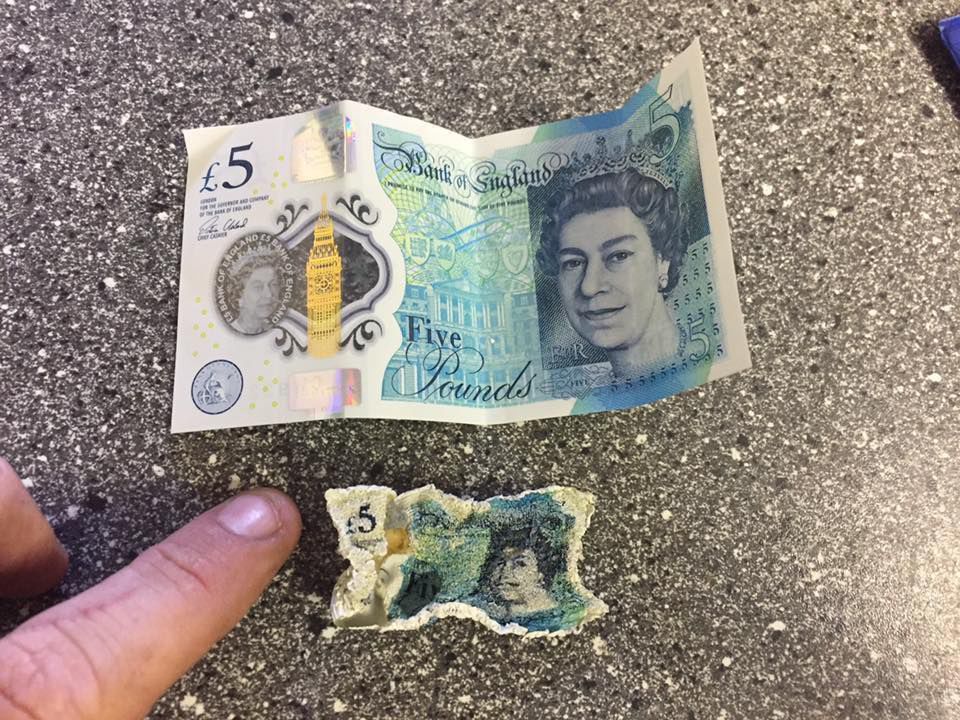
History of origin and development
Initially, money from plastic was released in the 1980s in Costa Rica, Haiti and on the Isle of Man, but due to the imperfection of technology (applied paint was peeled off from bills in the tropics, plus the fragility of the material) they were quickly abandoned.
Now the banknotes are made of polypropylene trademark Guardian . The material is created using a unique process: the polymer granules are poured into a mechanism, where under the action of gravity, air pressure, heating and cooling turn into a bubble with a height of 4-5-storey house (in the photo below, only the upper part). At the bottom, this bubble is rolled into rolls by the machine, cut, and then paint is applied in several layers onto the resulting film.
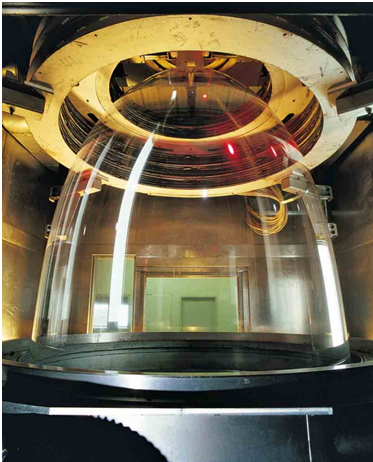
A visual description of the process of creating the main film of the "bubble":
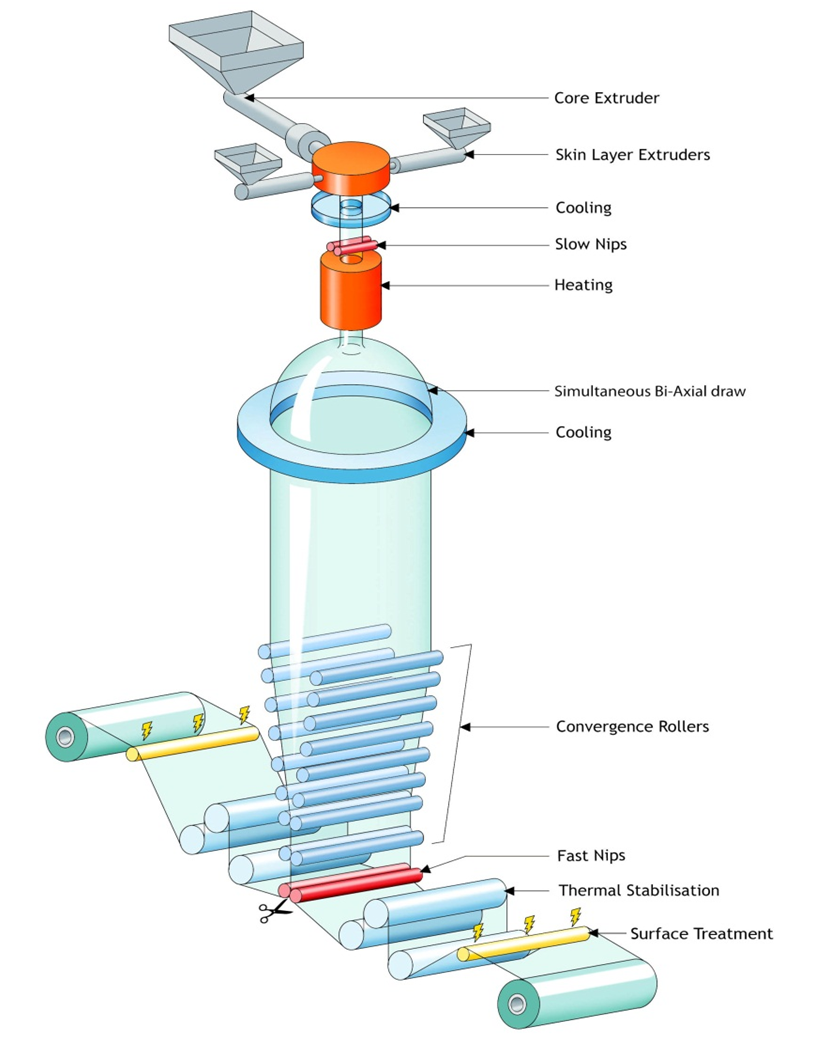
The Guardian consists of three main elements: a base film called Clarity C; opaque printing layers that allow ink to be applied later to adhere to the substrate; and security features that are printed or embedded in a 75 micron thick substrate.
Polymeric money is more expensive to manufacture than ordinary money, but the cost of emission is leveled by their properties. They are harder to break, they are more resistant to crushing and fire. Banknotes remain cleaner over the entire circulation period — they repel water and other liquids. Also, the lifetime of such bills is also longer - according to various estimates, it is 3-5 times longer than the standard 12-24 months. Among the means of protection against forgeries other than the traditional ones (relief of certain areas, watermarks, microtext, etc.), for the polymer money, those that cannot be applied on paper are used, for example, transparent elements of banknotes.
According to Innovia Security, which produces Guardian, currently there are more than 20 billion bills produced using this technology. In total, since 1988, about 50 billion of these banknotes have been printed.
Where is the "plastic" used in the form of a complete replacement of bills of cotton and linen?
The Australian dollar is the fifth most traded currency of the world after the US dollar, euro, yen and pound sterling. The Australian dollar accounts for 7% of world currency transactions as of April 2016 . And it was here, in Australia, as early as the 1980s that plastic money was fully issued for the first time.
The last of the issued bills is $ 5, updated on September 1, 2016.
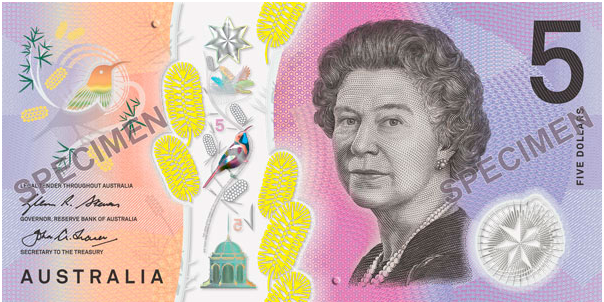

Before the update, the bill looked like this:


All Australian dollars are plastic today.
In addition to Australia, the following countries use all denominations of banknotes in plastic form: Brunei (Brunei dollar), Vietnam (Vietnamese dong), Canada (Canadian dollar), Maldives (Maldives Rufiya), New Zealand (New Zealand dollar), Papua - New Guinea (kina Papua New Guinea) and Romania (Romanian Leu).
Brunei dollar sample of 2011. The Brunei dollar is pegged to the Singaporean ratio of 1: 1. It is being adopted in Singapore in parallel with the way the Singapore dollar is usually accepted in Brunei.

Vietnamese dong . In Vietnamese, the word "dong" is used to denote any currency unit with the addition of the name of a country. In general, the "Dong" is translated as "copper" or "bronze." The term refers to Chinese bronze coins that were used as currency in the dynastic periods of China and Vietnam.
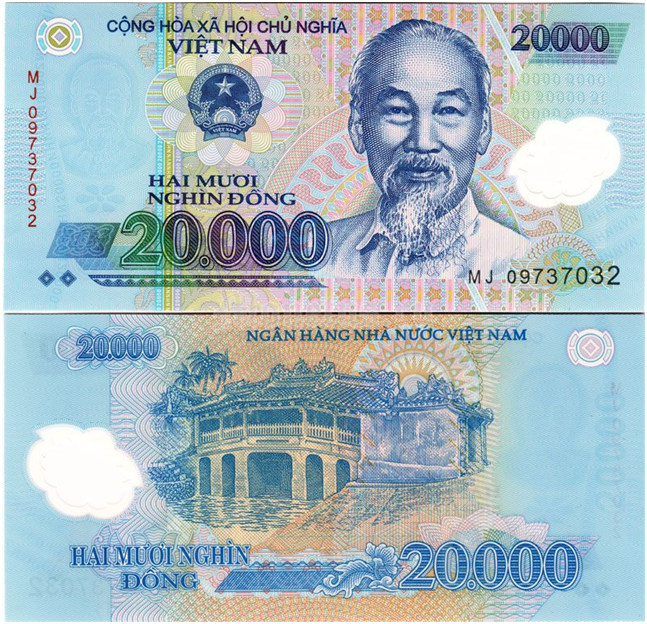
On the obverse (front side) of the bill, a portrait of Ho Chi Minh is placed on the right, on the left side, almost in the center, is the national emblem.
Canadian Dollar Series 2011-2013. It was during these years that the Bank of Canada began to issue polymer banknotes. The Canadian dollar is popular among central banks because of the relative economic stability of Canada and the stability of the country's legal and political systems.
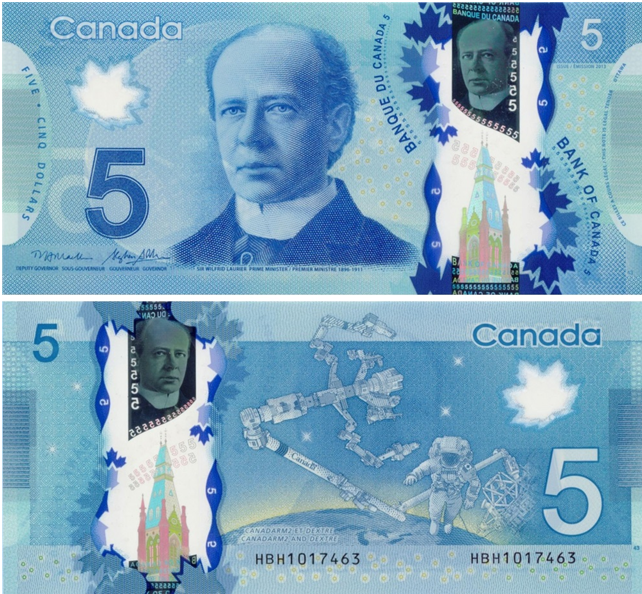
Maldives Rufia . The currency became polymeric not so long ago - in 2015. In October 2015, the Maldives Monetary Authority (acting as the central bank of the Maldives Republic) issued a plastic banknote of 5,000 rufies in honor of the 50th anniversary of independence. Later, the entire banknote series was released from the polymer: 10, 20, 50, 100, 500 and 1000 rufi, and 5000 were no longer used. The photo below shows the lowest denomination banknote:

Papua New Guinea. The first polymeric kins were released here in 1991. Paper banknotes have ceased to be legal means of payment and are not accepted by banks from December 31, 2014, now in use polymeric bills in 2, 5, 10, 20, 50 and 100 kin. In the photo below is a bill in denominations of 2 kinas of the 2007 model year. With the re-release of the following years, the design has changed slightly.

Romania, the largest country in South-Eastern Europe, also completely switched to the use of plastic bills . Polymer banknotes were introduced in Romania in 2005. These were 1, 5, 10, 50, 100 and 500 Romanian lei. In 2006, a 200 lei note was added.
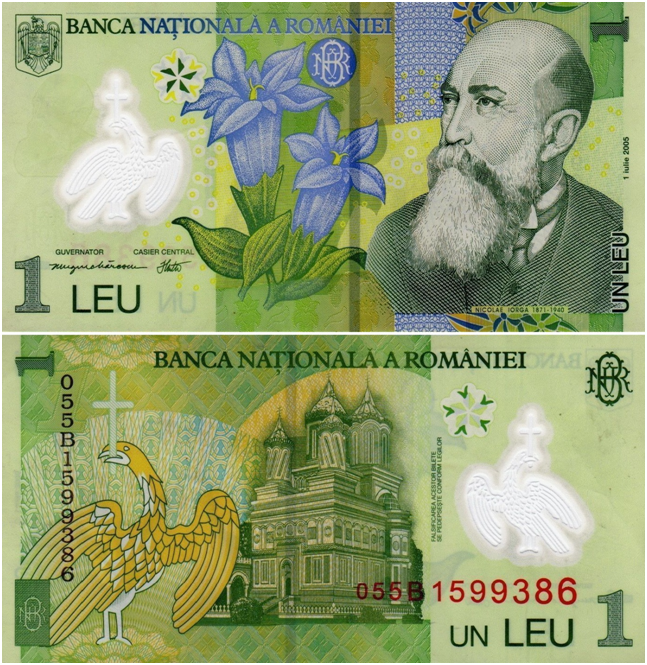
By the way, one of the plastic banknotes was recognized as the best banknote of 2015 in the IBNS competition - the International Association of Paper Money Collectors. Banknotes issued for the first time in the year of the competition are allowed to participate in the competition. Banknotes must be in circulation, and not be specially released souvenirs.
In addition to the main winner, the new 5 pounds sterling (also polymer), 20 SEK, 100 Russian rubles and 20 thousand Kazakhstani tenge were named the best bills of 2015. So, the best note of 2015 is 5 NZ dollars. The note depicts Everest's conqueror Sir Edmund Hillary, as well as Mount Cook and the yellow-eyed penguin. As with other plastic bills, there is a transparent window with a hologram placed in it.

We should not forget about the hybrid banknotes: the basis was paper (cotton or linen), and additionally used polymeric material. These bills are fully used in Bermuda, and partly in Gibraltar, Iraq, Kazakhstan, Mongolia, the United Arab Emirates, Tajikistan, Fiji and Jamaica.
The most famous hybrid bills can be called the new 20 and 50 euros, as well as 100 Russian rubles 2013-2014 year of release. In the photo below just such 100 rubles, in the lower part of which a protective polymer tape is embedded in the paper, creating a transparent oval window.

Results
The use of polymers to create cash chose different countries.
A dozen countries issued only very significant (memorable) banknotes: these are Brazil, Haiti, Gambia, Gibraltar, China, Lebanon, Poland, Samoa, Northern Ireland, the Solomon Islands, Sri Lanka and Taiwan.
The rest chose polymer money for permanent use. Australia was the first of these countries where money from polymers completely replaced paper money. Her example was followed by both the nearest neighbors - Papua New Guinea and New Zealand, and more distant ones - Brunei, Vietnam and Maldives. In addition to these countries, polymer money around the globe completely "seized" Canada and Romania, and is partly used in Great Britain, Israel, Hong Kong, Malaysia, Mexico, Singapore, Chile, and in many others .
Until the whole world has switched to plastic cards, many countries are switching to plastic money. Modern polymer banknotes have a number of advantages compared to conventional ones: they are more durable, are not afraid of water and other liquids, more easily tolerate wrinkling and stretching and are more protected from counterfeit. Let's see which country next will change the material for their bills.

Source: https://habr.com/ru/post/399131/
All Articles